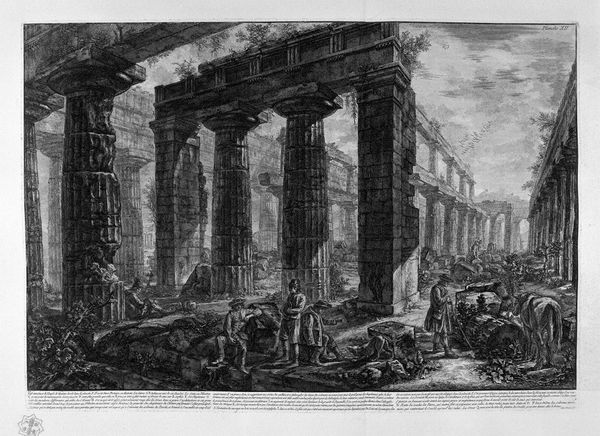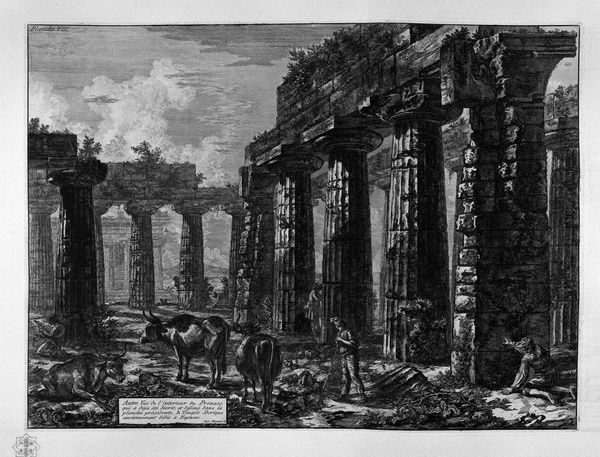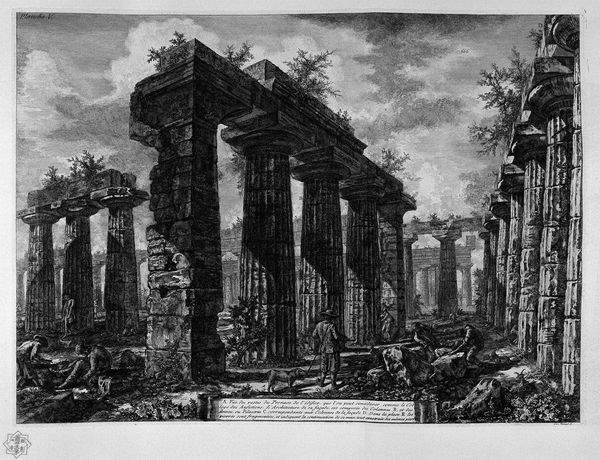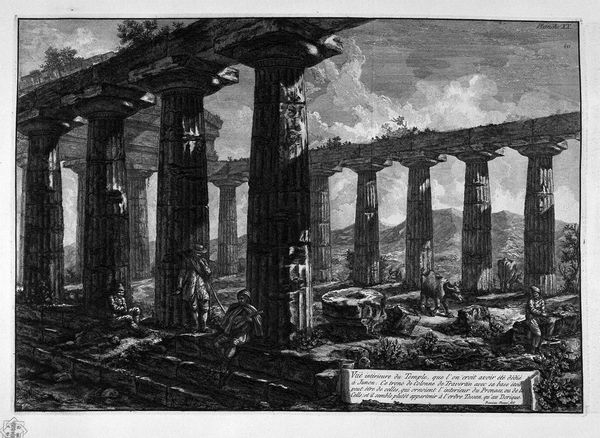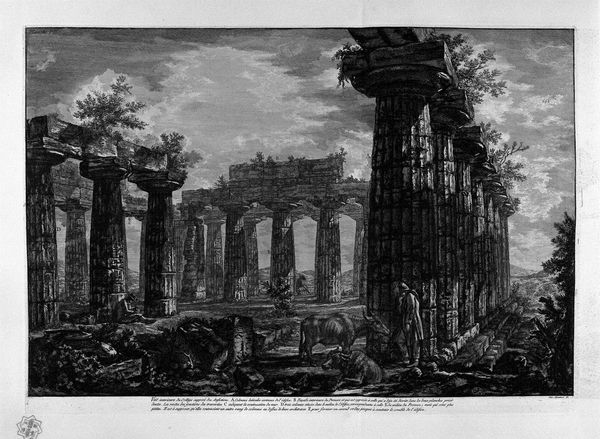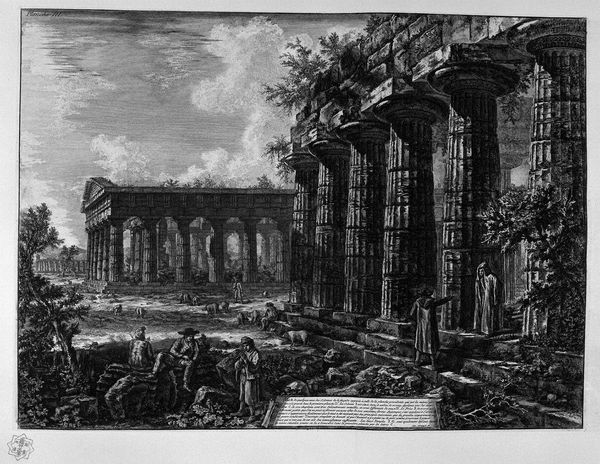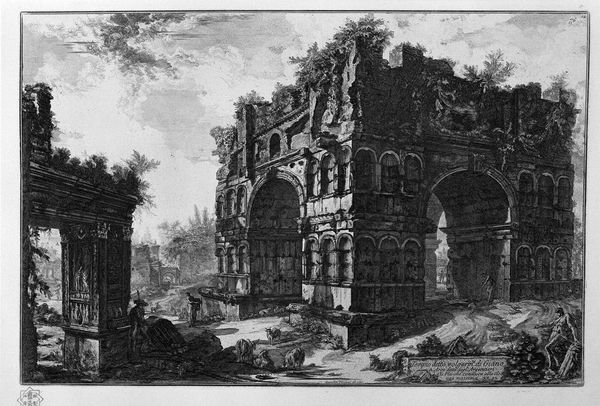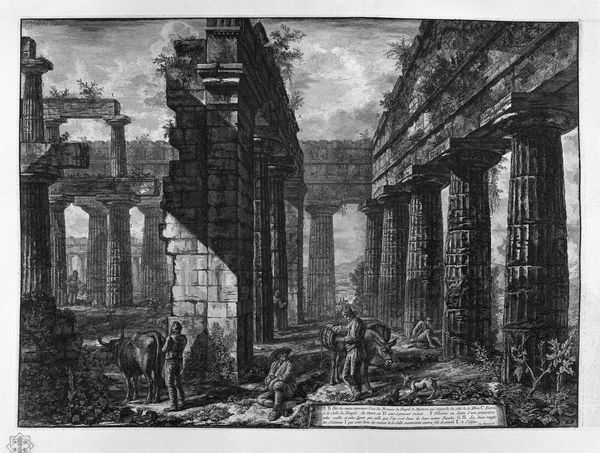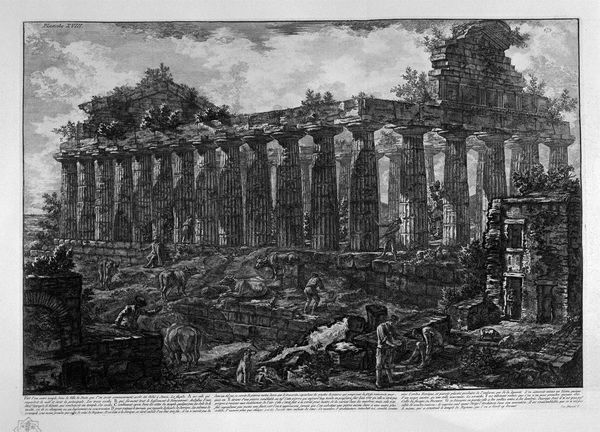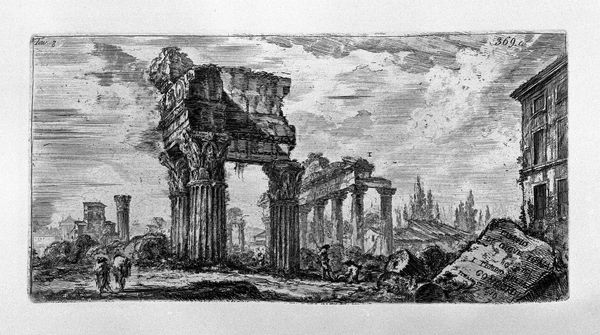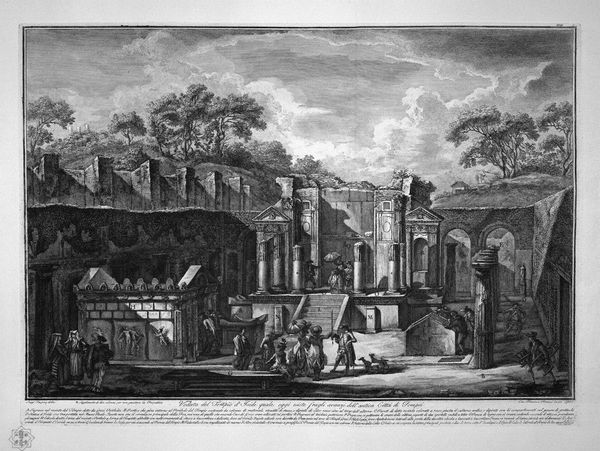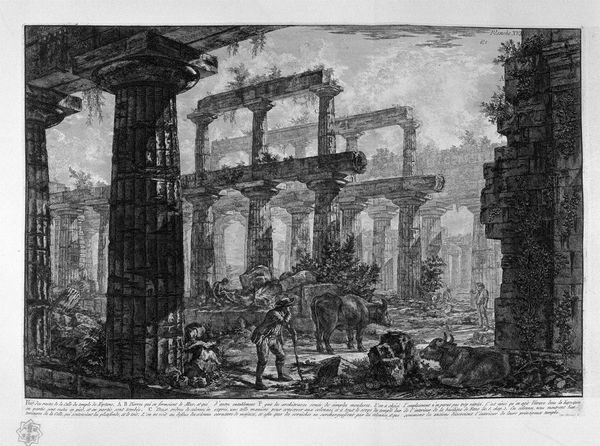
print, etching, photography, engraving, architecture
# print
#
etching
#
landscape
#
perspective
#
charcoal drawing
#
form
#
photography
#
romanesque
#
ancient-mediterranean
#
column
#
black and white
#
carved
#
surrealism
#
line
#
cityscape
#
engraving
#
architecture
Copyright: Public domain
Giovanni Battista Piranesi created this etching, "Leftovers behind the pronaos of which the above table," a part of his *Views of Rome* series, in 18th century Italy. Piranesi captures the grandeur of ancient Roman ruins, yet infuses them with a sense of decay and the passage of time, reflecting the Enlightenment’s fascination with classical antiquity. Note how the image creates meaning through visual codes. We see majestic columns and architectural fragments overgrown with vegetation. Small human figures wander amidst the ruins, emphasizing the scale of the architecture. This points to the decline of Roman power. Piranesi, who was trained as an architect, was also frustrated by the shift away from classical design in his own time. His work could be seen as a lament for the lost grandeur of Rome and a critique of contemporary artistic trends. Historians consult a variety of sources, including architectural treatises, historical accounts, and social commentary from the period, to better understand the artwork's relationship to its cultural and institutional context.
Comments
No comments
Be the first to comment and join the conversation on the ultimate creative platform.
